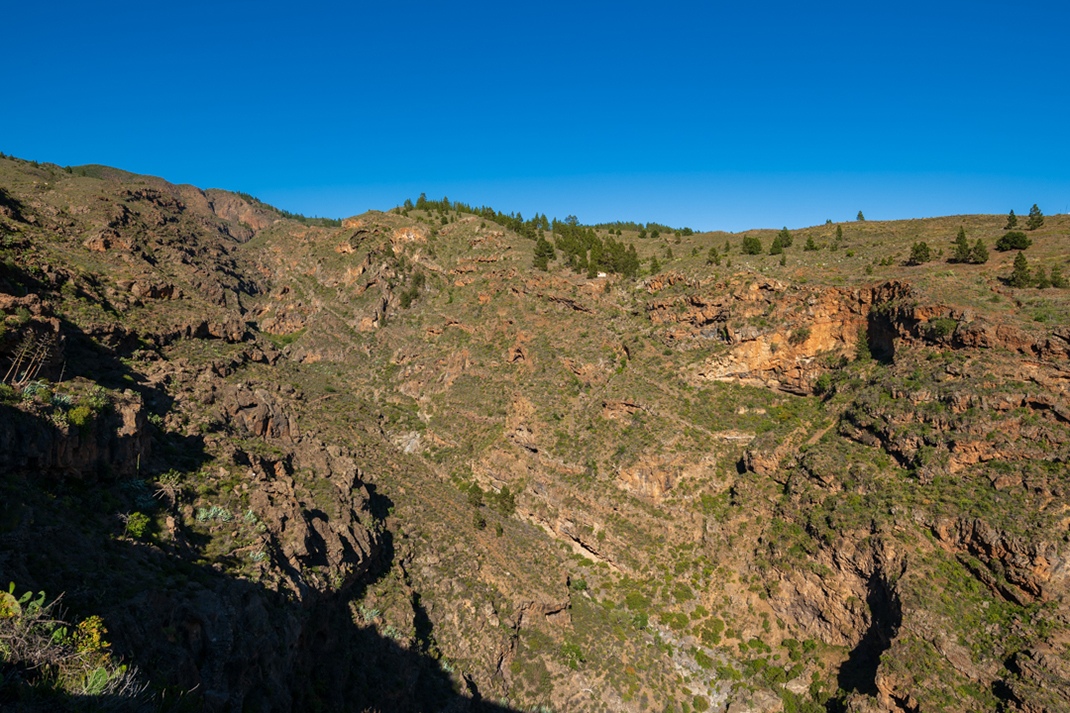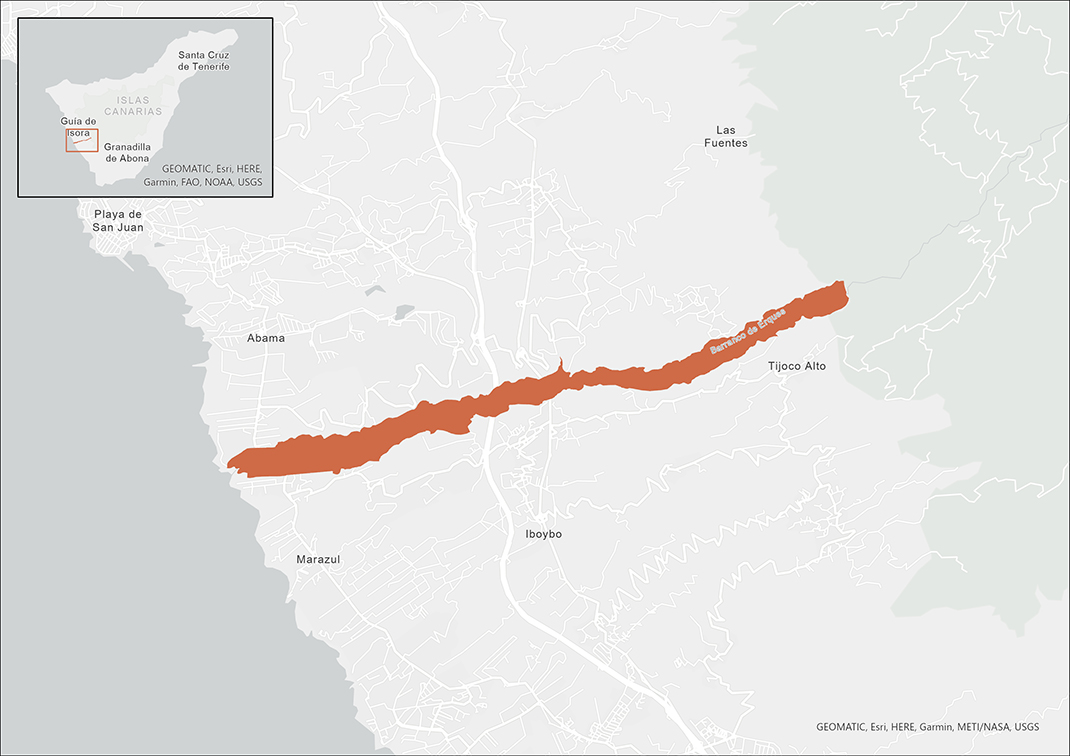Plan your next adventure
Tailor your own route along Tenerife’s trails quickly and easily..
Go to planner
The Barranco de Erques Protected Landscape is a deep rift measuring 13km long, beginning at the top of the mid-altitude zone, at 1150m above sea level, traveling down to the coast, at 32m in altitude.
Its walls reveal the different volcanic periods that have taken place throughout the geological history of the island.
Recommended time to visit: All year-round.
This natural area contains a spectacular ravine with sheer vertical walls and slopes up to 175m high.
This orography creates a rugged landscape with well preserved geological formations that are typical of the island, hence its protection.

The area is dominated by vegetation that is typical in low- and mid-altitude areas on this side of the island.
Because of the variety in altitudes and the existence of different water points, there is a wide variety of environments for invertebrate fauna. The list is long, and includes a number of endemic species to the island and the archipelago, including the canarielapilosa snail and the longicorniodelcardón beetle.
The most commonly found reptile is Gallot’s lizard. Birds that nest in the area include the Scopoli's shearwater, and birds of prey such as the buzzard, long-eared owl and even passerine birds, like the crow, plain swift, Berthelot's pipit, grey wagtail, Canary Islands chiffchaff and the European goldfinch.
Bats are the only native mammals to inhabit the protected landscape, with confirmed sightings of the European free-tailed bat and the Madeira pipistrelle.

237.9 hectares (0.1% of the island)
Balsam spurge (Euphorbia balsamifera), cardoncillo (Ceropegia), esparraguera (Asparagus umbellatus), balo (Plocamapendula), leñabuena (Neochamaeleapulverulenta), romeromarino (Campylanthussalsoloides), cardón (Euphorbia canariensis), tasaigo (Rubiafruticosa), cornica (Periplocalaevigata), wild olive tree (Oleaoleaster), Atlas pistachio (Pistaciaatlantica), Phoenician juniper (Juniperusphoenicea), vinagrera (Rumexlunaria), incienso (Artemisia canariensis), magarza (Argyranthemumfrutescens), yerba cumbre (Cedronella canariensis), rosalilo de cumbre (Pterocephaluslasiospermus), alhelídel Teide (Erysimumscoparium), retama del Teide (Spartocytisussupranubius), viborinatriste (Echiumtriste), canarielapilosa snail, longicornio del cardón beetle, Gallot’s lizard, Scopoli's shearwater, buzzard, long-eared owl, crow, plain swift, Berthelot's pipit, grey wagtail, Canary Islands chiffchaff, European goldfinch, European free-tailed bat, Madeira pipistrelle.
Cardonal-tabaibal, cardonal, sabinar, rock-dwelling, ravine basin.
To consult permits for use and updated regulations for this Protected Natural Area, visit the official website of the Government of the Canary Islands.

Tailor your own route along Tenerife’s trails quickly and easily..
Go to planner